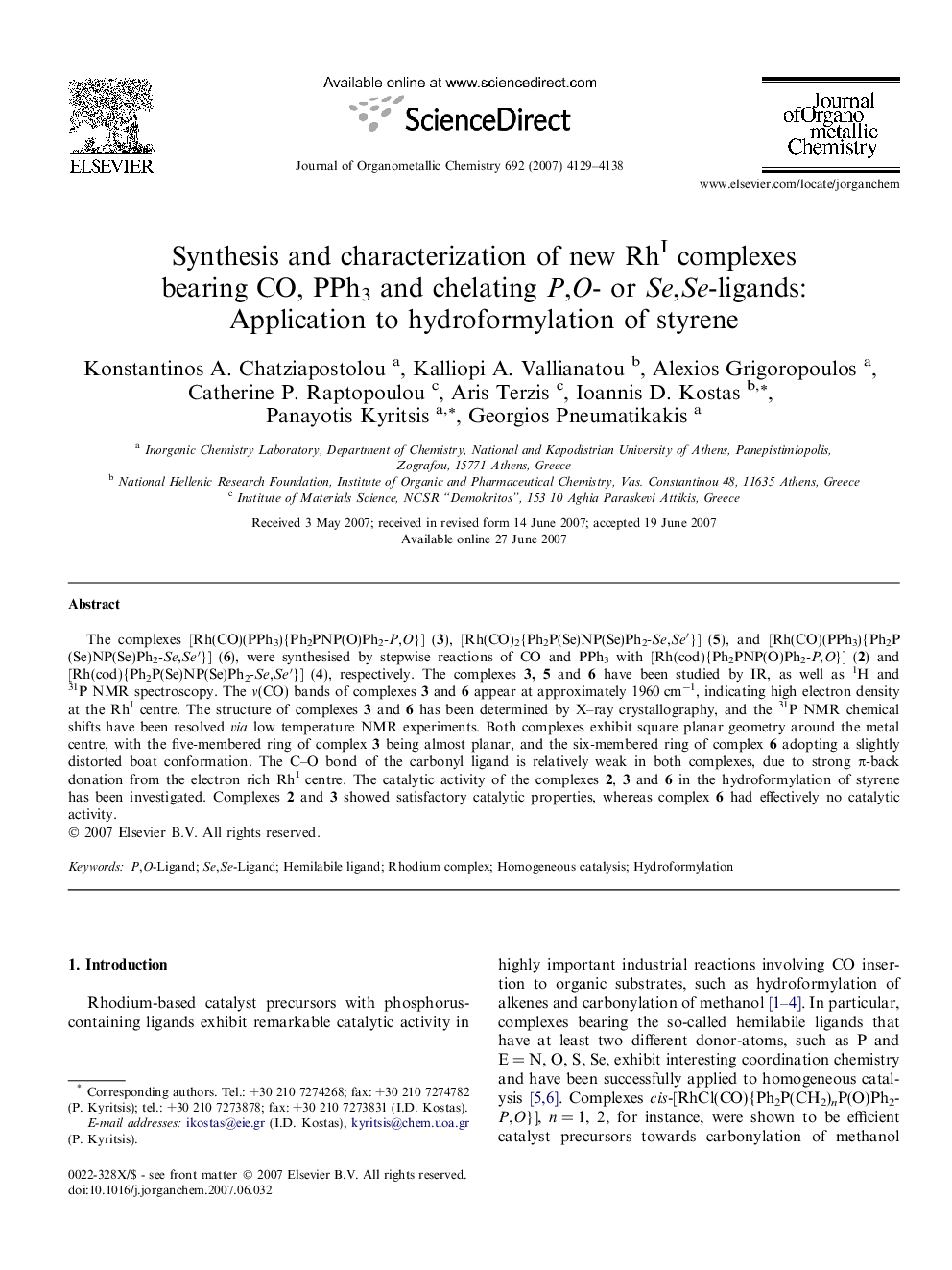| Article ID | Journal | Published Year | Pages | File Type |
|---|---|---|---|---|
| 1323402 | Journal of Organometallic Chemistry | 2007 | 10 Pages |
The complexes [Rh(CO)(PPh3){Ph2PNP(O)Ph2-P,O}] (3), [Rh(CO)2{Ph2P(Se)NP(Se)Ph2-Se,Se′}] (5), and [Rh(CO)(PPh3){Ph2P(Se)NP(Se)Ph2-Se,Se′}] (6), were synthesised by stepwise reactions of CO and PPh3 with [Rh(cod){Ph2PNP(O)Ph2-P,O}] (2) and [Rh(cod){Ph2P(Se)NP(Se)Ph2-Se,Se′}] (4), respectively. The complexes 3, 5 and 6 have been studied by IR, as well as 1H and 31P NMR spectroscopy. The ν(CO) bands of complexes 3 and 6 appear at approximately 1960 cm−1, indicating high electron density at the RhI centre. The structure of complexes 3 and 6 has been determined by X–ray crystallography, and the 31P NMR chemical shifts have been resolved via low temperature NMR experiments. Both complexes exhibit square planar geometry around the metal centre, with the five-membered ring of complex 3 being almost planar, and the six-membered ring of complex 6 adopting a slightly distorted boat conformation. The C–O bond of the carbonyl ligand is relatively weak in both complexes, due to strong π-back donation from the electron rich RhI centre. The catalytic activity of the complexes 2, 3 and 6 in the hydroformylation of styrene has been investigated. Complexes 2 and 3 showed satisfactory catalytic properties, whereas complex 6 had effectively no catalytic activity.
Graphical abstractComplexes containing electron rich RhI centres and bearing (cod), CO, PPh3 and P,O- or Se,Se-ligands have been synthesized, structurally and spectroscopically characterized and applied as catalysts for the hydroformylation of styrene. Complexes which contain the P,O-ligand, forming a five-membered ring with Rh, exhibit the best catalytic activity.Figure optionsDownload full-size imageDownload as PowerPoint slide
